RBS 2012 Annual Report Download - page 514
Download and view the complete annual report
Please find page 514 of the 2012 RBS annual report below. You can navigate through the pages in the report by either clicking on the pages listed below, or by using the keyword search tool below to find specific information within the annual report.-
 1
1 -
 2
2 -
 3
3 -
 4
4 -
 5
5 -
 6
6 -
 7
7 -
 8
8 -
 9
9 -
 10
10 -
 11
11 -
 12
12 -
 13
13 -
 14
14 -
 15
15 -
 16
16 -
 17
17 -
 18
18 -
 19
19 -
 20
20 -
 21
21 -
 22
22 -
 23
23 -
 24
24 -
 25
25 -
 26
26 -
 27
27 -
 28
28 -
 29
29 -
 30
30 -
 31
31 -
 32
32 -
 33
33 -
 34
34 -
 35
35 -
 36
36 -
 37
37 -
 38
38 -
 39
39 -
 40
40 -
 41
41 -
 42
42 -
 43
43 -
 44
44 -
 45
45 -
 46
46 -
 47
47 -
 48
48 -
 49
49 -
 50
50 -
 51
51 -
 52
52 -
 53
53 -
 54
54 -
 55
55 -
 56
56 -
 57
57 -
 58
58 -
 59
59 -
 60
60 -
 61
61 -
 62
62 -
 63
63 -
 64
64 -
 65
65 -
 66
66 -
 67
67 -
 68
68 -
 69
69 -
 70
70 -
 71
71 -
 72
72 -
 73
73 -
 74
74 -
 75
75 -
 76
76 -
 77
77 -
 78
78 -
 79
79 -
 80
80 -
 81
81 -
 82
82 -
 83
83 -
 84
84 -
 85
85 -
 86
86 -
 87
87 -
 88
88 -
 89
89 -
 90
90 -
 91
91 -
 92
92 -
 93
93 -
 94
94 -
 95
95 -
 96
96 -
 97
97 -
 98
98 -
 99
99 -
 100
100 -
 101
101 -
 102
102 -
 103
103 -
 104
104 -
 105
105 -
 106
106 -
 107
107 -
 108
108 -
 109
109 -
 110
110 -
 111
111 -
 112
112 -
 113
113 -
 114
114 -
 115
115 -
 116
116 -
 117
117 -
 118
118 -
 119
119 -
 120
120 -
 121
121 -
 122
122 -
 123
123 -
 124
124 -
 125
125 -
 126
126 -
 127
127 -
 128
128 -
 129
129 -
 130
130 -
 131
131 -
 132
132 -
 133
133 -
 134
134 -
 135
135 -
 136
136 -
 137
137 -
 138
138 -
 139
139 -
 140
140 -
 141
141 -
 142
142 -
 143
143 -
 144
144 -
 145
145 -
 146
146 -
 147
147 -
 148
148 -
 149
149 -
 150
150 -
 151
151 -
 152
152 -
 153
153 -
 154
154 -
 155
155 -
 156
156 -
 157
157 -
 158
158 -
 159
159 -
 160
160 -
 161
161 -
 162
162 -
 163
163 -
 164
164 -
 165
165 -
 166
166 -
 167
167 -
 168
168 -
 169
169 -
 170
170 -
 171
171 -
 172
172 -
 173
173 -
 174
174 -
 175
175 -
 176
176 -
 177
177 -
 178
178 -
 179
179 -
 180
180 -
 181
181 -
 182
182 -
 183
183 -
 184
184 -
 185
185 -
 186
186 -
 187
187 -
 188
188 -
 189
189 -
 190
190 -
 191
191 -
 192
192 -
 193
193 -
 194
194 -
 195
195 -
 196
196 -
 197
197 -
 198
198 -
 199
199 -
 200
200 -
 201
201 -
 202
202 -
 203
203 -
 204
204 -
 205
205 -
 206
206 -
 207
207 -
 208
208 -
 209
209 -
 210
210 -
 211
211 -
 212
212 -
 213
213 -
 214
214 -
 215
215 -
 216
216 -
 217
217 -
 218
218 -
 219
219 -
 220
220 -
 221
221 -
 222
222 -
 223
223 -
 224
224 -
 225
225 -
 226
226 -
 227
227 -
 228
228 -
 229
229 -
 230
230 -
 231
231 -
 232
232 -
 233
233 -
 234
234 -
 235
235 -
 236
236 -
 237
237 -
 238
238 -
 239
239 -
 240
240 -
 241
241 -
 242
242 -
 243
243 -
 244
244 -
 245
245 -
 246
246 -
 247
247 -
 248
248 -
 249
249 -
 250
250 -
 251
251 -
 252
252 -
 253
253 -
 254
254 -
 255
255 -
 256
256 -
 257
257 -
 258
258 -
 259
259 -
 260
260 -
 261
261 -
 262
262 -
 263
263 -
 264
264 -
 265
265 -
 266
266 -
 267
267 -
 268
268 -
 269
269 -
 270
270 -
 271
271 -
 272
272 -
 273
273 -
 274
274 -
 275
275 -
 276
276 -
 277
277 -
 278
278 -
 279
279 -
 280
280 -
 281
281 -
 282
282 -
 283
283 -
 284
284 -
 285
285 -
 286
286 -
 287
287 -
 288
288 -
 289
289 -
 290
290 -
 291
291 -
 292
292 -
 293
293 -
 294
294 -
 295
295 -
 296
296 -
 297
297 -
 298
298 -
 299
299 -
 300
300 -
 301
301 -
 302
302 -
 303
303 -
 304
304 -
 305
305 -
 306
306 -
 307
307 -
 308
308 -
 309
309 -
 310
310 -
 311
311 -
 312
312 -
 313
313 -
 314
314 -
 315
315 -
 316
316 -
 317
317 -
 318
318 -
 319
319 -
 320
320 -
 321
321 -
 322
322 -
 323
323 -
 324
324 -
 325
325 -
 326
326 -
 327
327 -
 328
328 -
 329
329 -
 330
330 -
 331
331 -
 332
332 -
 333
333 -
 334
334 -
 335
335 -
 336
336 -
 337
337 -
 338
338 -
 339
339 -
 340
340 -
 341
341 -
 342
342 -
 343
343 -
 344
344 -
 345
345 -
 346
346 -
 347
347 -
 348
348 -
 349
349 -
 350
350 -
 351
351 -
 352
352 -
 353
353 -
 354
354 -
 355
355 -
 356
356 -
 357
357 -
 358
358 -
 359
359 -
 360
360 -
 361
361 -
 362
362 -
 363
363 -
 364
364 -
 365
365 -
 366
366 -
 367
367 -
 368
368 -
 369
369 -
 370
370 -
 371
371 -
 372
372 -
 373
373 -
 374
374 -
 375
375 -
 376
376 -
 377
377 -
 378
378 -
 379
379 -
 380
380 -
 381
381 -
 382
382 -
 383
383 -
 384
384 -
 385
385 -
 386
386 -
 387
387 -
 388
388 -
 389
389 -
 390
390 -
 391
391 -
 392
392 -
 393
393 -
 394
394 -
 395
395 -
 396
396 -
 397
397 -
 398
398 -
 399
399 -
 400
400 -
 401
401 -
 402
402 -
 403
403 -
 404
404 -
 405
405 -
 406
406 -
 407
407 -
 408
408 -
 409
409 -
 410
410 -
 411
411 -
 412
412 -
 413
413 -
 414
414 -
 415
415 -
 416
416 -
 417
417 -
 418
418 -
 419
419 -
 420
420 -
 421
421 -
 422
422 -
 423
423 -
 424
424 -
 425
425 -
 426
426 -
 427
427 -
 428
428 -
 429
429 -
 430
430 -
 431
431 -
 432
432 -
 433
433 -
 434
434 -
 435
435 -
 436
436 -
 437
437 -
 438
438 -
 439
439 -
 440
440 -
 441
441 -
 442
442 -
 443
443 -
 444
444 -
 445
445 -
 446
446 -
 447
447 -
 448
448 -
 449
449 -
 450
450 -
 451
451 -
 452
452 -
 453
453 -
 454
454 -
 455
455 -
 456
456 -
 457
457 -
 458
458 -
 459
459 -
 460
460 -
 461
461 -
 462
462 -
 463
463 -
 464
464 -
 465
465 -
 466
466 -
 467
467 -
 468
468 -
 469
469 -
 470
470 -
 471
471 -
 472
472 -
 473
473 -
 474
474 -
 475
475 -
 476
476 -
 477
477 -
 478
478 -
 479
479 -
 480
480 -
 481
481 -
 482
482 -
 483
483 -
 484
484 -
 485
485 -
 486
486 -
 487
487 -
 488
488 -
 489
489 -
 490
490 -
 491
491 -
 492
492 -
 493
493 -
 494
494 -
 495
495 -
 496
496 -
 497
497 -
 498
498 -
 499
499 -
 500
500 -
 501
501 -
 502
502 -
 503
503 -
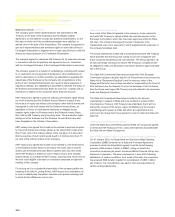 504
504 -
 505
505 -
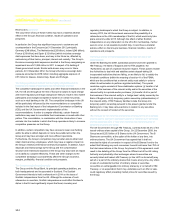 506
506 -
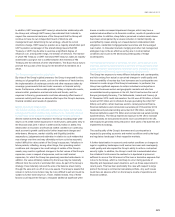 507
507 -
 508
508 -
 509
509 -
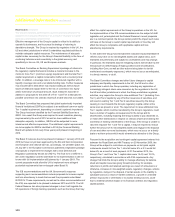 510
510 -
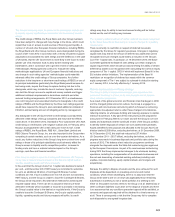 511
511 -
 512
512 -
 513
513 -
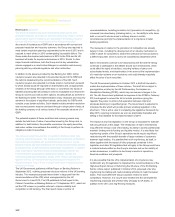 514
514 -
 515
515 -
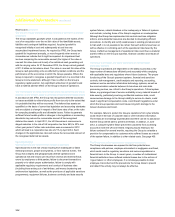 516
516 -
 517
517 -
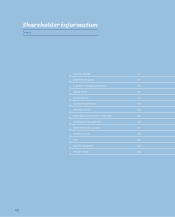 518
518 -
 519
519 -
 520
520 -
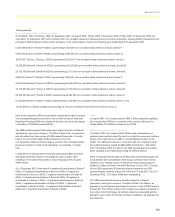 521
521 -
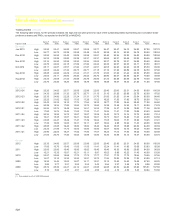 522
522 -
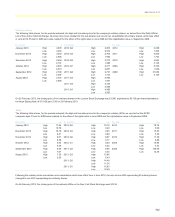 523
523 -
 524
524 -
 525
525 -
 526
526 -
 527
527 -
 528
528 -
 529
529 -
 530
530 -
 531
531 -
 532
532 -
 533
533 -
 534
534 -
 535
535 -
 536
536 -
 537
537 -
 538
538 -
 539
539 -
 540
540 -
 541
541 -
 542
542 -
 543
543
 |
 |

Risk factors continued
The Group is subject to resolution procedures under current and
proposed resolution and recovery schemes which may result in various
actions being taken in relation to any securities of the Group, including
the write off, write-down or conversion of the Group’s securities
As a result of its status as a GSIFI and in accordance with current and
proposed resolution and recovery schemes, the Group was required to
meet certain resolution planning requirements by the end of 2012 and is
required to meet others in 2013 contemplating its possible failure. The
Group made the required submissions in 2012 to the FSA and its US
business will make its required submissions in 2013. Similar to other
major financial institutions, both the Group and its key subsidiaries
remain engaged in a constructive dialogue on resolution and recovery
planning with key national regulators and other authorities.
In addition to the powers provided by the Banking Act 2009, further
resolution powers are expected to be provided as part of the RRD and
the reforms implementing the recommendations of the ICB. Such
resolution powers are expected to include a bail-in mechanism, pursuant
to which losses would be imposed on shareholders and, as appropriate,
creditors of the Group (through write-down or conversion into equity of
liabilities including debt securities) in order to recapitalise and restore the
Group to solvency as well as other options, including those as set forth in
the Banking Act 2009. The implementation of any resolution and recovery
scheme is the subject of significant debate, particularly for GSIFIs with
complex cross border activities. Such debate includes whether resolution
and recovery powers may be exercised through a single point of entry at
the holding company or at various levels of the corporate structure of a
GSIFI.
The potential impacts of these resolution and recovery powers may
include the total loss of value of securities issued by the Group and, in
addition for debt holders, the possible conversion into equity securities,
and under certain circumstances the inability of the Group to perform its
obligations under its securities.
The Group is subject to a number of regulatory initiatives which may
adversely affect its business. The Independent Commission on Banking’s
final report on competition and possible structural reforms in the UK
banking industry has been adopted by the UK Government which intends
to implement the recommendations substantially as proposed. In addition
other proposals to ring fence certain business activities and the US
Federal Reserve’s proposal for applying US capital, liquidity and
enhanced prudential standards to certain of the Group’s US operations
together with the UK reforms could require structural changes to the
Group’s business. Any of these changes could have a material adverse
effect on the Group.
The UK Government published a White Paper on Banking Reform in
September 2012, outlining proposed structural reforms in the UK banking
industry. The measures proposed were drawn in large part from the
recommendations of the ICB, which was appointed by the UK
Government in June 2010, The ICB published its final report to the
Cabinet Committee on Banking Reform on 12 September 2011, which set
out the ICB’s views on possible reforms to improve stability and
competition in UK banking. The final report made a number of
recommendations, including in relation to (i) promotion of competition, (ii)
increased loss absorbency (including bail-in, i.e., the ability to write down
debt or convert it into an issuer’s ordinary shares in certain
circumstances) and (iii) the implementation of a ring-fence of retail
banking operations.
The measures in relation to the promotion of competition are already
largely in train, including the development of an industry mechanism to
make it easier for customers to switch their personal current accounts to
a different provider, which is due to be completed by September 2013.
Bail-in mechanisms continue to be discussed by the EU and the Group
continues to participate in the debate around such mechanisms, which
could affect the rights of creditors, including holders of senior and
subordinated bonds, and shareholders in the event of the implementation
of a resolution scheme or an insolvency and could thereby materially
affect the price of such securities.
The UK Government published in October 2012 a draft bill intended to
enable the implementation of these reforms. This draft bill is subject to
pre-legislative scrutiny by the UK Parliamentary Commission on
Standards in Banking (PCBS), which may recommend changes to the
bill. The UK Government published its response to the PCBS in February
2013 and agreed to amend the bill to include provisions giving the
regulator the power to enforce full separation between retail and
wholesale banking in a specified group. The Government is expected to
introduce the bill, which will provide primary enabling legislation in the
short term. This is with a view to completing the legislative framework by
May 2015, requiring compliance as soon as practicable thereafter and
setting a final deadline for full implementation of 2019.
The impact of any final legislation on the Group is impossible to estimate
with any precision at this stage. The introduction of bail-in mechanisms
may affect the Group’s cost of borrowing, its ability to access professional
markets’ funding and its funding and liquidity metrics. It is also likely that
ring-fencing certain of the Group’s operations would require significant
restructuring with the possible transfer of large numbers of customers
between legal entities. It is possible that such ring-fencing, by itself, or
taken together with the impact of other proposals contained in this
legislation and other EU legislation that will apply to the Group could have
a material adverse effect on the Group’s structure and on the viability of
certain businesses, in addition to the Group’s results of operations,
financial conditions and prospects.
It is also possible that the UK’s implementation of a ring-fence may
conflict with any EU legislation to implement the recommendations of the
High-level Expert Group on Reforming the Structure of the EU Banking
Sector, whose report, published in October 2012, proposed, inter alia,
ring-fencing the trading and market-making activities of major European
banks. This could affect the Group’s position relative to some
competitors. However, it is not yet clear whether the EU will implement
ring-fencing proposals and whether they will apply to UK banks, in
addition to the UK’s own ring-fencing measures.
512
Additional information continued
